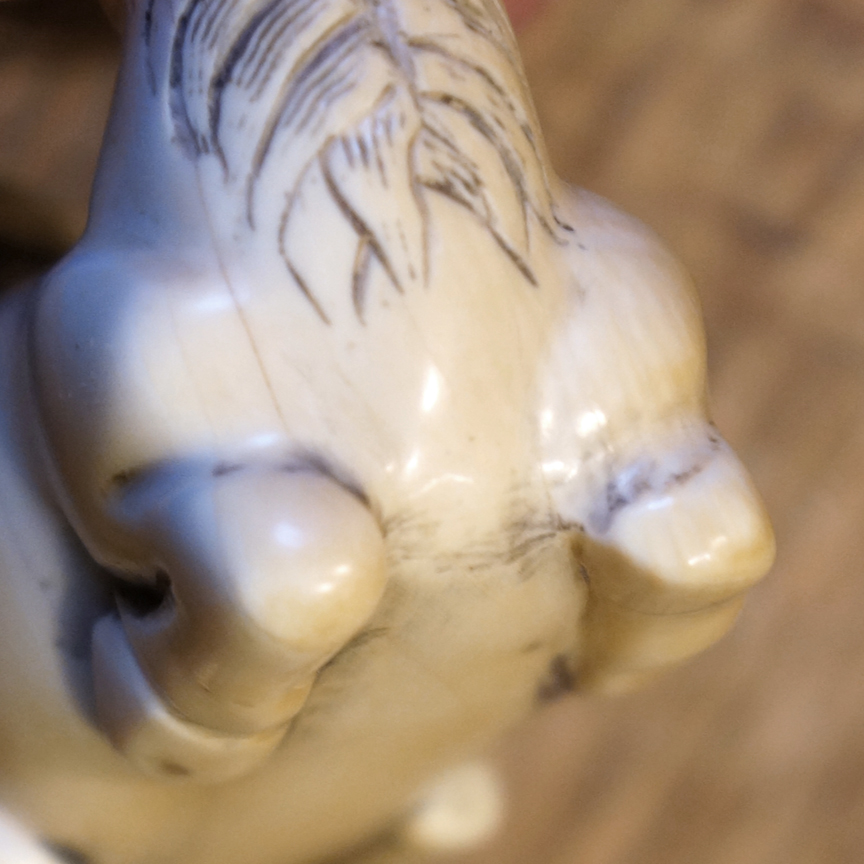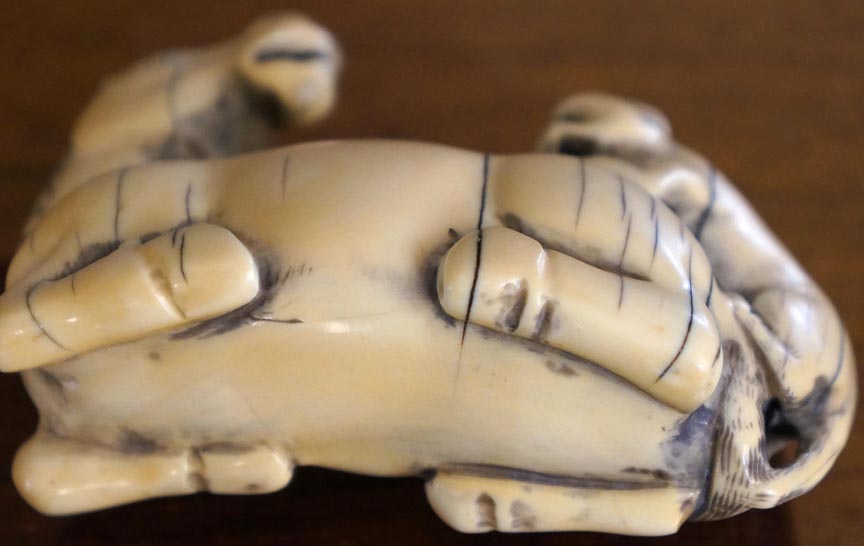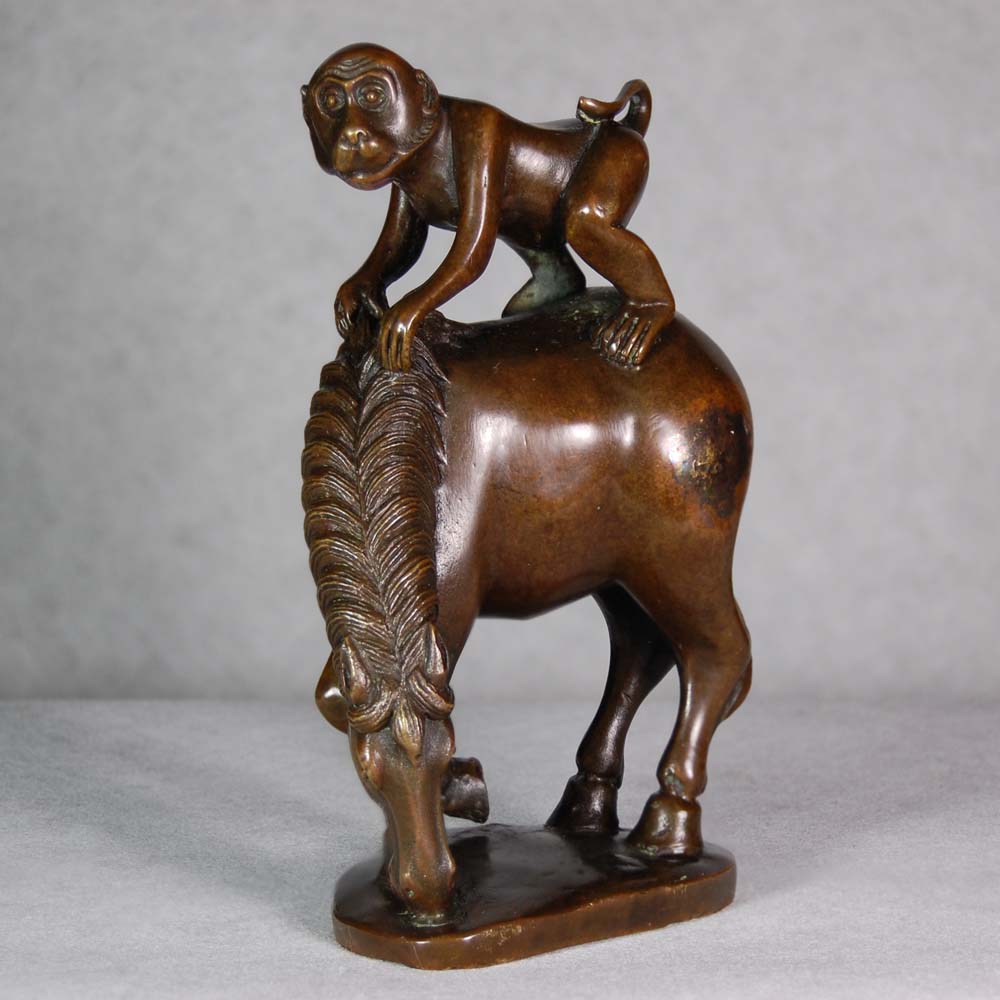
|
Subject:Re: Old Ivory Horse and demon carving
Posted By: Stan Wed, Sep 05, 2018
First, I always enjoy Bill H's telling of an Asian myth. Thanks for that, Bill.
I can't say for certain whether it is a netsuke or not. You give no measurements. There is what could be an attachment point under the lion's tail. Note, the hole is very circular indicating that, if it is a netsuke, it hasn't had much use.
If presented with your horse/lion, I wouldn't buy it. In my opinion it is recent. My reasoning follows.
Below you will see four netsuke. The right 3 were purchased at auction in Oct. 2005. The New Orleans Museum of Art was deaccessioning some artifacts to raise money after Hurricane Katrina. So, while those 3 could be considered "museum quality", they were the first to go in a pinch.
The water buffalo has been reliably dated to circa 1930. My guess is that the snake and the toad on a bamboo stump are somewhat older. Note the patina.
That was a long winded way of getting to my point that I associate white ivory with new carvings. If the color of your pictures is correct, I consider this a first strike.
Next, note the "cracks" in your object. Looking at the horse's breast, there appears to be grain that runs parallel to the length of the horse. (better pictures would help) Thus, the cracks are perpendicular to the grain. I haven't made a study of ivory ageing, but I suspect that any cracks would be with the grain. Strike 2.
Next, let's look at the workmanship. The execution of your piece seems somewhat crude. Look at the second picture below. Note the similarity between the carving of the eyes of that dragon and the lion of your carving. The carving is rather crude and appears to perhaps have been done with a rotating tool (likely electric) with a round end. This dragon I consider a mistake purchase. After I purchased it, I found one exactly like it on eBay. Obviously, mine was recently mass produced. Strike 3.
Lastly, note the black "dirt" in the "cracks" and the nooks and crannies of your piece. I associate this black "dirt" with an effort to make the piece look old. Notice the lack of such "dirt" on the three pieces from the New Orleans Museum of Art above. There is darker patina in the nooks and crannies, but it isn't that black "dirt". Strike 4.
I am not an expert in netsuke. I just like them and have a few. I hope these observations will give you something to think about and research.
Cheers,
Stan
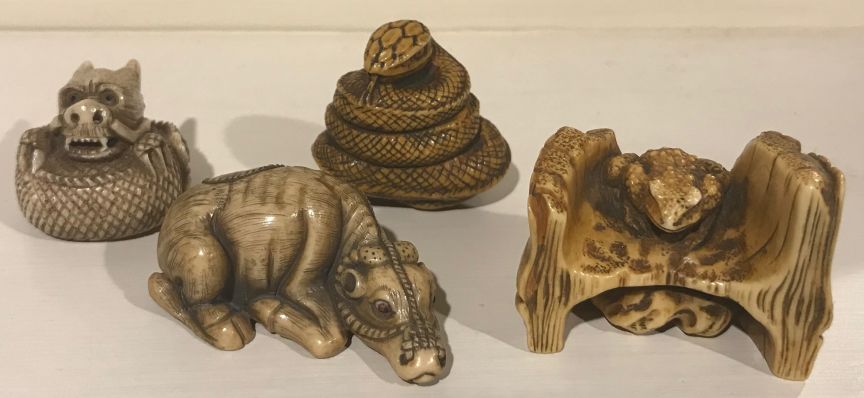
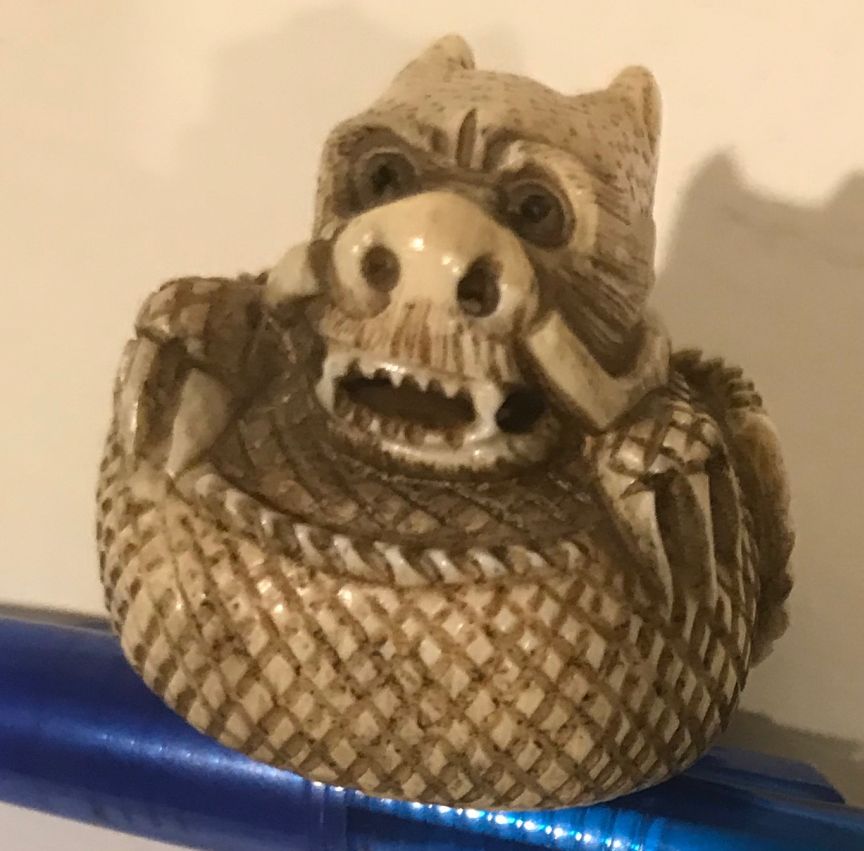


|
 Old Ivory Horse and demon carving
Old Ivory Horse and demon carving  ( China & Japan ) - Michael - Sep 01, 2018 (03:38 PM)
( China & Japan ) - Michael - Sep 01, 2018 (03:38 PM)  Re: Old Ivory Horse and demon carving
Re: Old Ivory Horse and demon carving  - Bill H - Sep 03, 2018 (01:27 AM)
- Bill H - Sep 03, 2018 (01:27 AM)  Re: Old Ivory Horse and demon carving
Re: Old Ivory Horse and demon carving  - Stan - Sep 05, 2018 (09:10 PM)
- Stan - Sep 05, 2018 (09:10 PM) 
